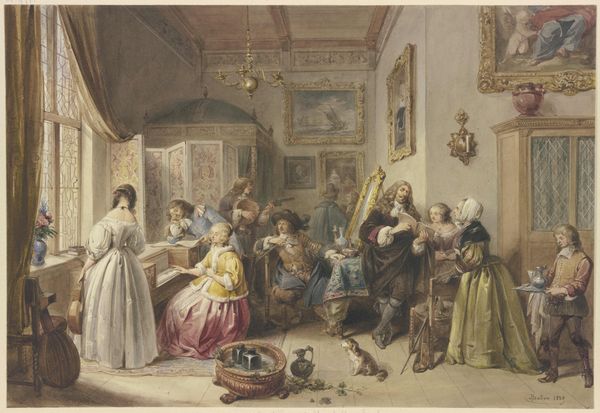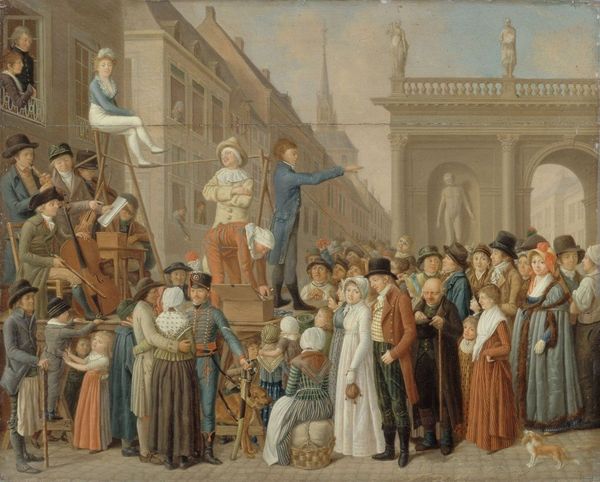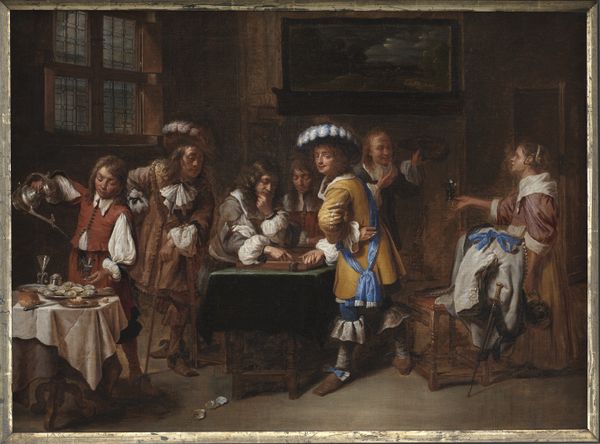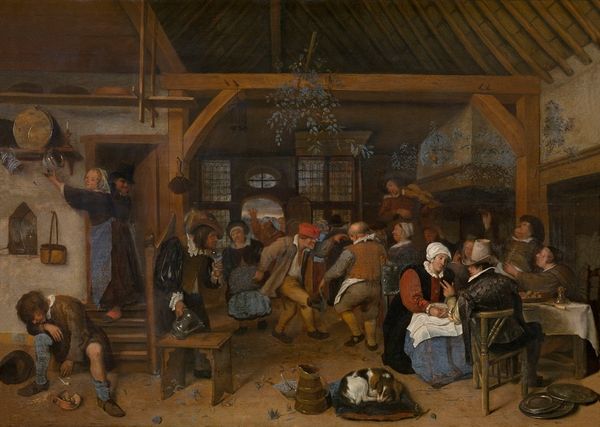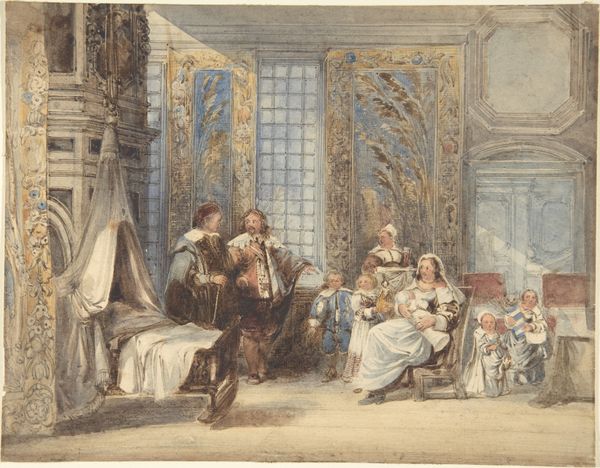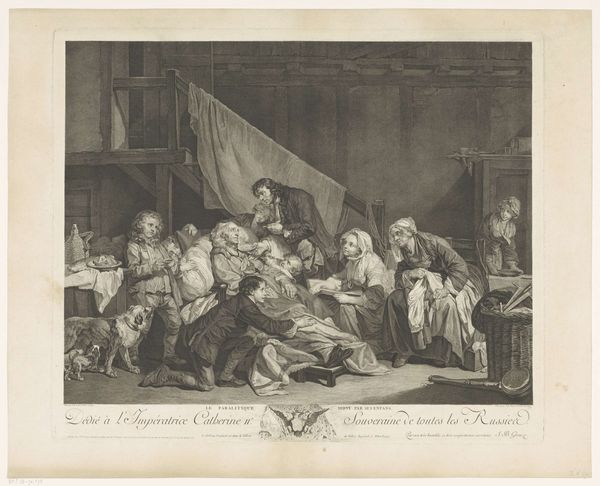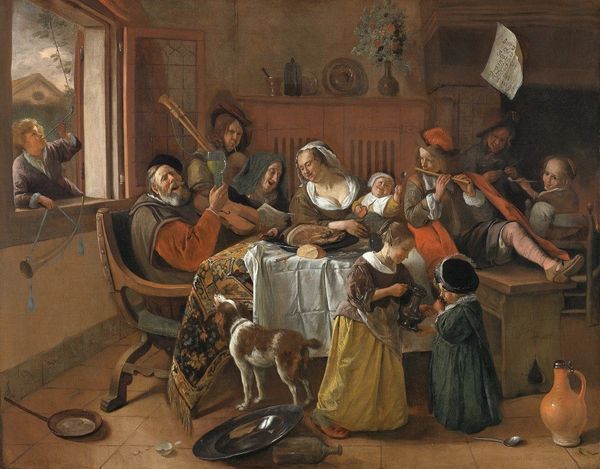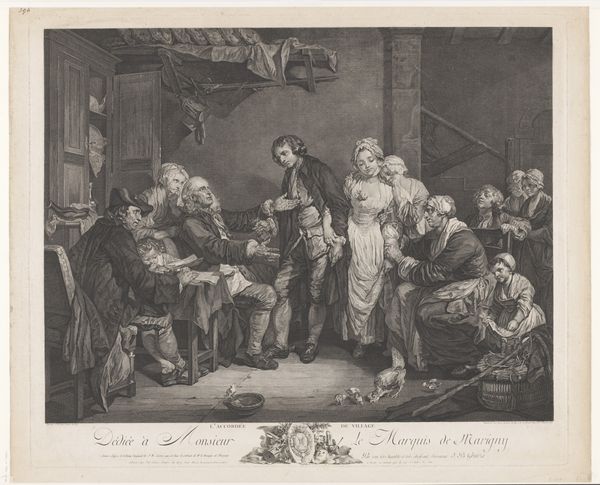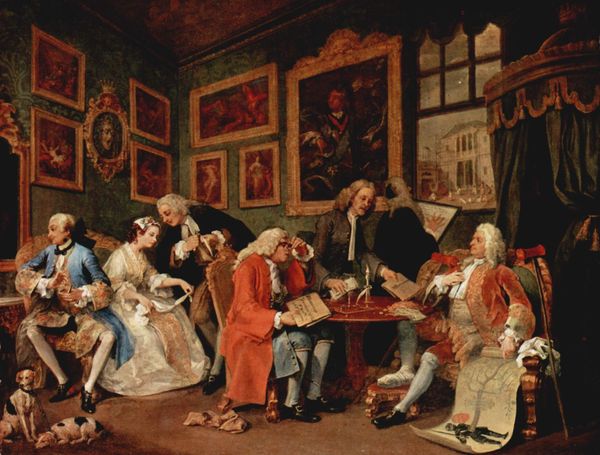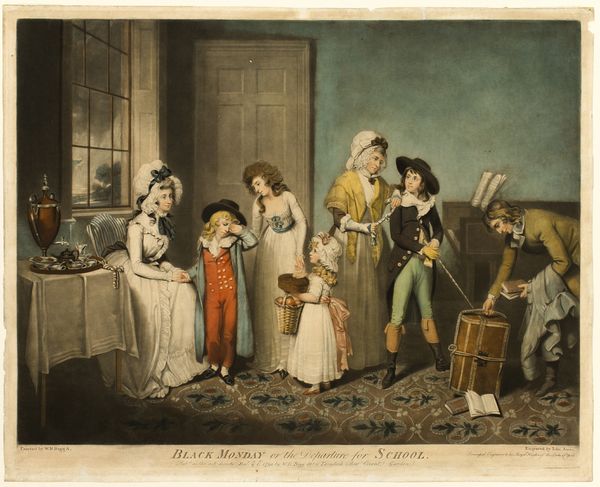
De schuttersmaaltijd in de Voetboogdoelen te Amsterdam ter viering van het sluiten van de vrede van Munster, 18 juni 1648 1779
0:00
0:00
painting, watercolor
#
portrait
#
dutch-golden-age
#
painting
#
watercolor
#
group-portraits
#
genre-painting
#
history-painting
#
watercolor
Dimensions: height 372 mm, width 516 mm
Copyright: Rijks Museum: Open Domain
Editor: Here we have "De schuttersmaaltijd in de Voetboogdoelen te Amsterdam ter viering van het sluiten van de vrede van Munster, 18 juni 1648," or "Civic Guardsmen's Meal," painted by Jacob Cats, though much later in 1779, rendered in watercolor. It's a bustling scene! All those people around the table give a real sense of...well, abundance. What jumps out at you about it? Curator: It's fascinating to consider the context of its creation. Cats, painting this almost 150 years later. What materials are being depicted here beyond the watercolor paint? Look at the clothing, the tableware...what do these material choices suggest about the patrons and their social status, or how Cats wished them to be perceived? Editor: The clothing definitely speaks to wealth, doesn't it? Fine fabrics, embellishments… And there's so much metal in the weaponry and tableware. It suggests prosperity but also, considering they are guardsmen, power tied to these material objects. Curator: Precisely. Consider too, that the watercolor medium itself, while perhaps considered less prestigious than oil at the time, still required resources and skill. The labor of production is subtly embedded in every brushstroke. This isn’t just an image of wealth, it’s an object of wealth, reflecting both subject and artist as implicated in social relations of production. Do you notice any discrepancies between the image and other accounts from the time? Editor: It's interesting that you point out that this painting occurred much later than the depicted moment, during the Dutch Golden Age. Perhaps the opulence is idealized in retrospect, a sort of nostalgia for a period perceived as grander? Curator: An astute observation. The artist, and consequently, the viewer, engage in consumption of a romanticized historical moment. What purpose might that serve? Editor: Well, reflecting on this painting through the lens of material production makes me reconsider my initial reaction to the painting and now leads me to realize the painting functions almost as propaganda, solidifying existing class structures and values. Curator: Precisely! Thinking about materials allows us a perspective beyond just aesthetic appreciation.
Comments
No comments
Be the first to comment and join the conversation on the ultimate creative platform.
